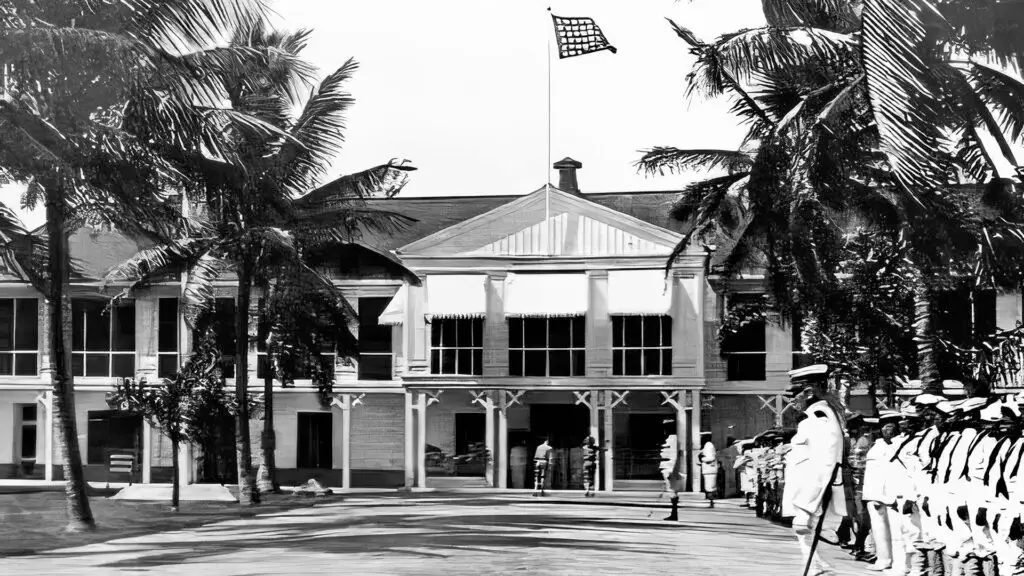US Naval Era: Development of the Code of Guam

Shift from Spanish to American
Although Guam became an American possession in 1898, it was not until 1933 that the laws of Guam began to reflect those of the United States rather than of Spain. For nearly 34 years of American rule the rulings and decisions made in the island’s judicial system were based heavily upon the terms laid out in Spanish law, including the titles used in court and methods of punishment.
However, Governor’s decrees superceded Spanish laws.
Then in December of 1933 there was a significant governmental change. Governor George A. Alexander ordered an executive decree, nullifying the former laws and replacing them with a new set that were modeled after the California Codes. Known as the Code of Guam (today known as the Guam Code Annotated), the new laws were printed in a volume and made official in 1937. The Guam Code were seen by some as a confusing amalgamation of US Navy and California procedures. It was the first printing of the modern laws of Guam.
The volume of the Code of Guam was divided into five parts:
- Penal Code of Guam
- Civil Code of Guam
- Regulations with the Force and Effect of Law in Guam
- Code of Civil Procedures
- Probate Code.
Under the new code, the laws remained subject to the will of the governor, though the means and degree of punishment became less severe and the judges were granted a larger range of leniency. What the code failed to address was the lack of a proper Appellate branch and jury, a matter left unresolved until 1950 with the signing of the Organic Act of Guam.
For further reading
Coontz, Robert E. From the Mississippi to the Sea. Pittsburgh: Dorrance & Company, Inc., 1930.
Judiciary of Guam. “Judiciary of Guam (Hustisian Guahån).”
Sanchez, Anthony P. Justice on Guam: A Historical Review. Hagåtña: Superior Court of Guam, 1991.
